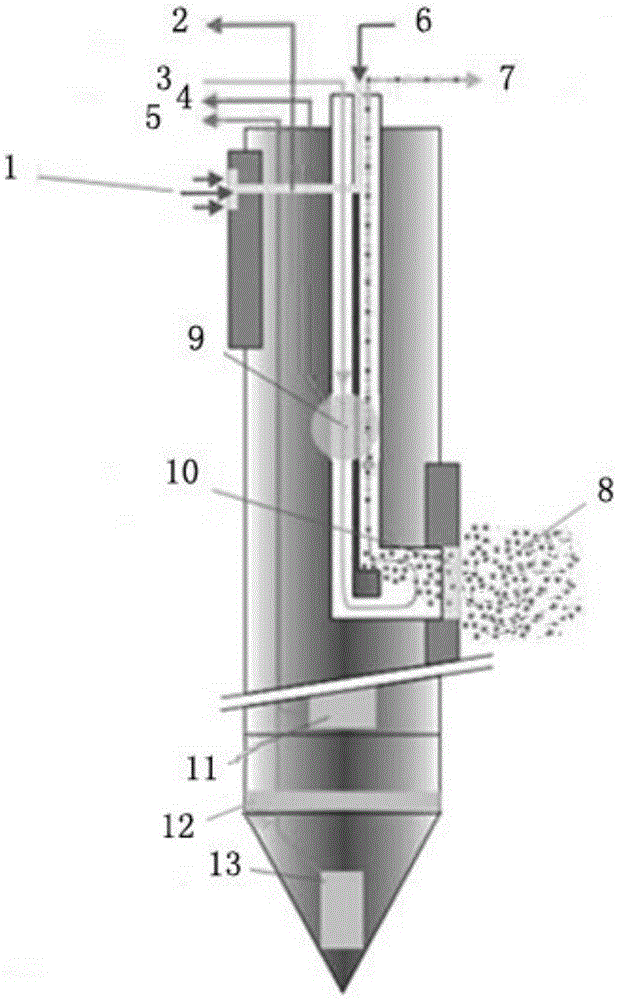Seabed shallow-layer gas detection method based on MIP-CPT technology
A technology of MIP-CPT and detection method, which is applied in the field of seabed exploration, can solve problems such as high cost, cumbersome construction, and unsatisfactory formation information, and achieve the effects of high safety, reduced operation complexity, and outstanding advantages of data integration
- Summary
- Abstract
- Description
- Claims
- Application Information
AI Technical Summary
Problems solved by technology
Method used
Image
Examples
Embodiment 1
[0055] A method for detecting seabed shallow gas based on MIP-CPT technology, comprising the steps of:
[0056] S1. The MIP-CPT underwater unit is lowered from the mother ship and placed on the seabed;
[0057] S2. The MIP-CPT combination probe formed by attaching the MIP module to the CPTU probe penetrates into the seabed with the drill pipe;
[0058] S3. Continuously measure CPTU data, CPTU data includes cone end resistance, side friction resistance, pore water pressure, conductivity;
[0059] S4. During the penetration process, after the organic matter in the formation is continuously thermally decomposed by the MIP module, it is carried to the gas chromatograph by the inert gas along the capillary in the armored cable;
[0060] S5. Photoionization detectors, flame ionization detectors, and dry-type electrolytic conductivity detectors continuously detect the organic substances delivered;
[0061] S6. After the test is over, the drill pipe is raised, and the underwater uni...
Embodiment 2
[0087] This embodiment is similar to Embodiment 1, except that the MIP-CPT combination probe also includes a sampling port 1 through which water samples or gas can be collected during the penetration process.
[0088] Based on the MIP-CPT test data obtained on site, the present invention identifies the free shallow gas and dissolved methane within 30 meters below the seabed in the Zhoushan sea area of the East China Sea, and the results generally conform to the conclusions obtained from the previous geophysical survey. After further analysis of the MIP-CPT data, it is concluded that the shallow gas in the test sea area mainly comes from deeper formations, and the circumstantial evidence of multi-channel seismic exploration results has been obtained. Therefore, the MIP-CPT technology that combines the advantages of drilling and geophysical exploration It has broad application prospects in shallow seabed gas detection.
PUM
 Login to View More
Login to View More Abstract
Description
Claims
Application Information
 Login to View More
Login to View More - Generate Ideas
- Intellectual Property
- Life Sciences
- Materials
- Tech Scout
- Unparalleled Data Quality
- Higher Quality Content
- 60% Fewer Hallucinations
Browse by: Latest US Patents, China's latest patents, Technical Efficacy Thesaurus, Application Domain, Technology Topic, Popular Technical Reports.
© 2025 PatSnap. All rights reserved.Legal|Privacy policy|Modern Slavery Act Transparency Statement|Sitemap|About US| Contact US: help@patsnap.com



